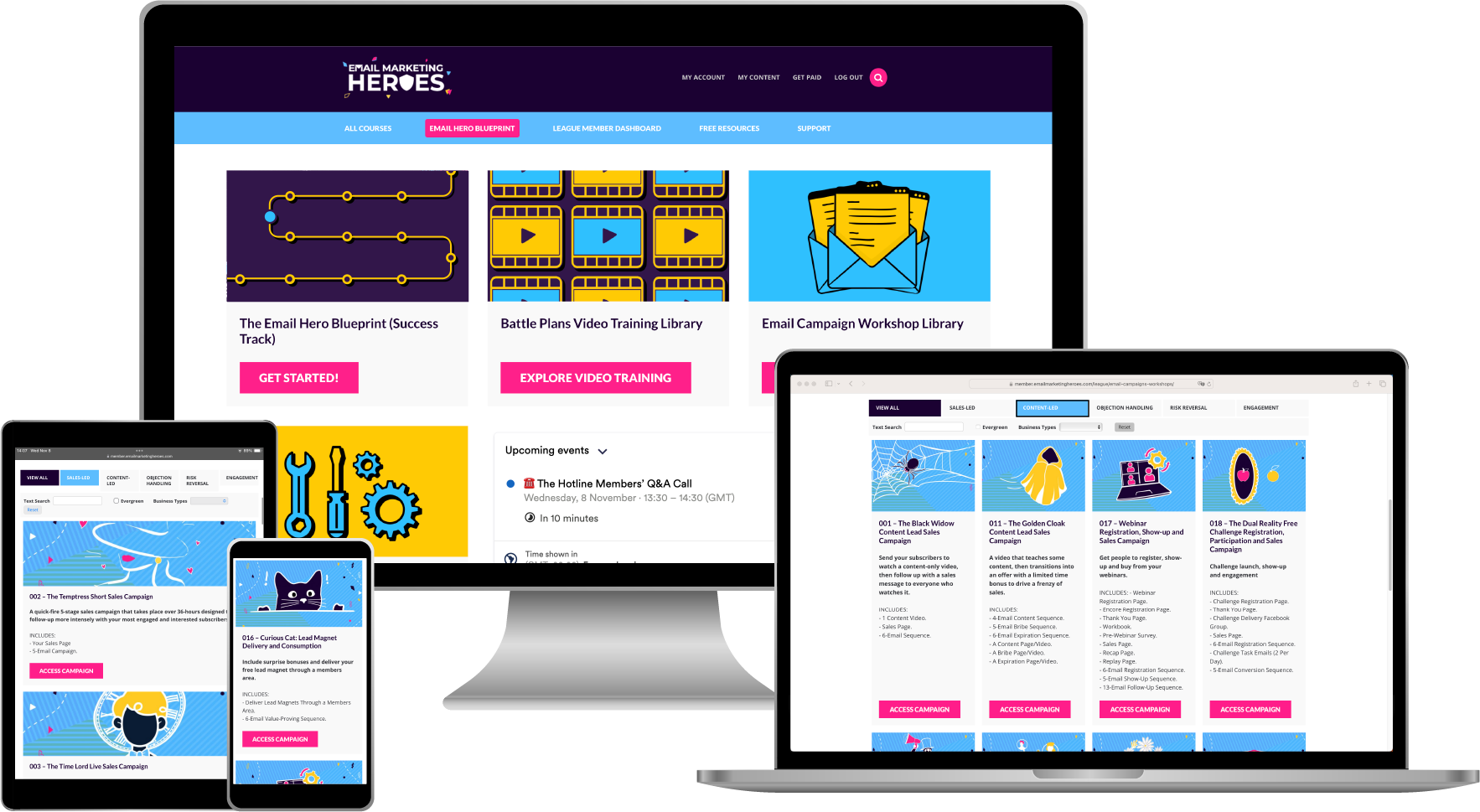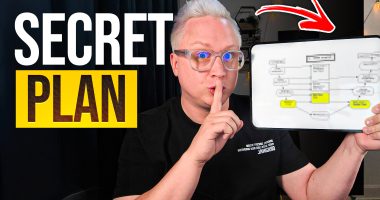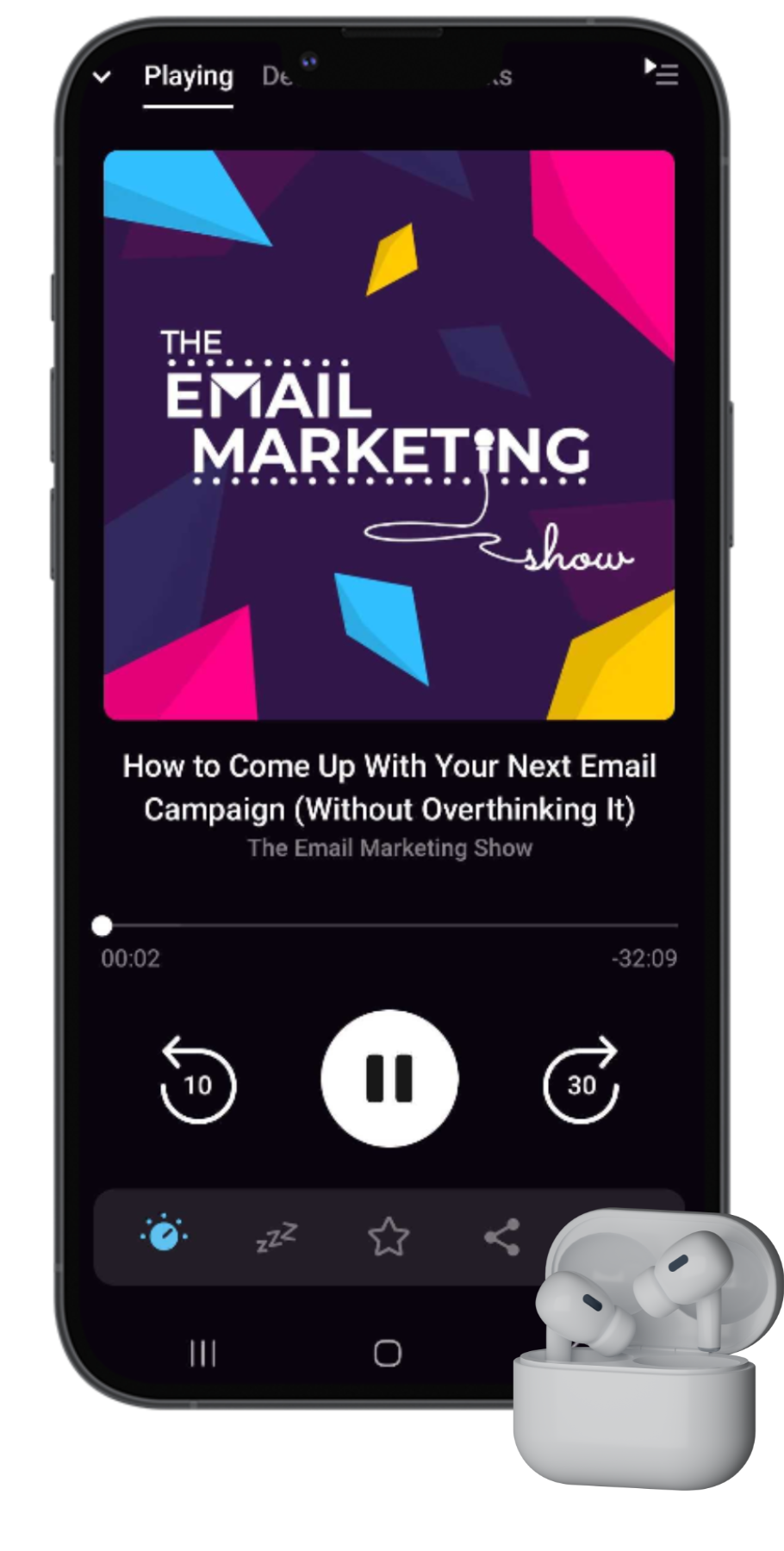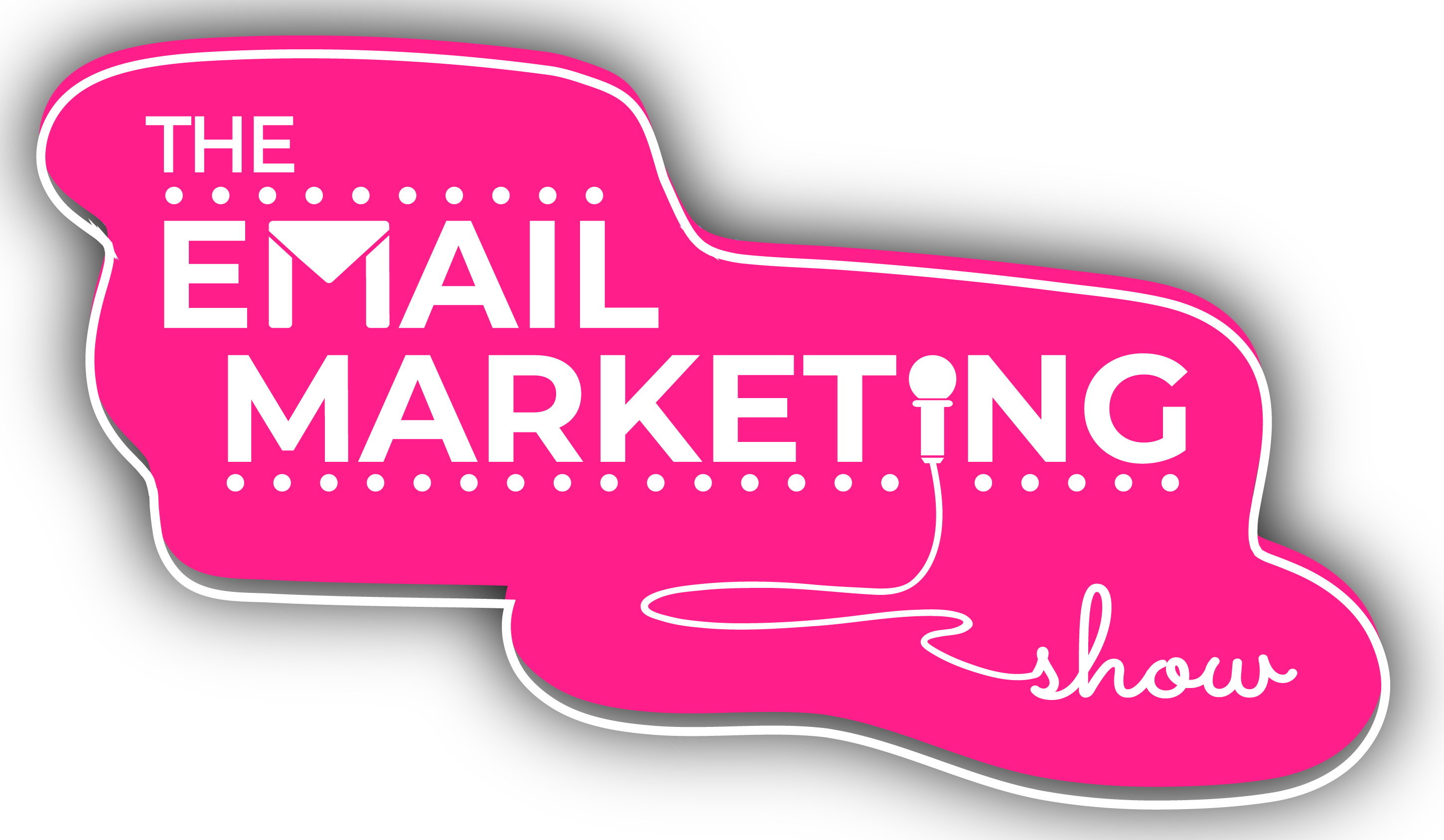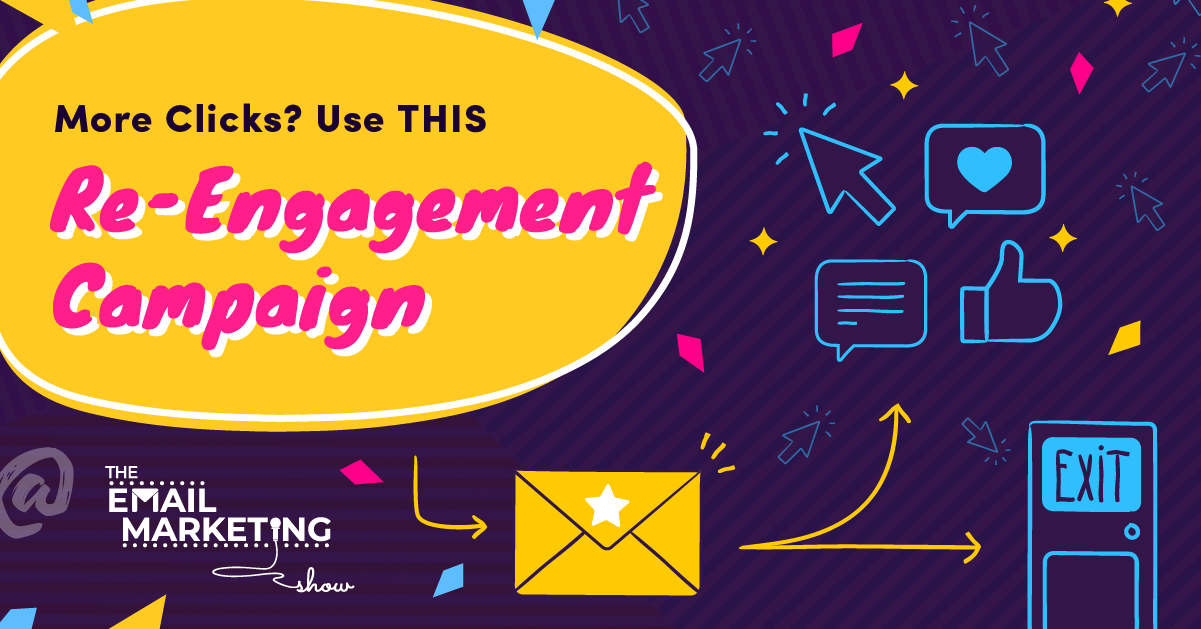
How To Create THE Most Successful Re-Engagement Email Campaign (And Smash Your Sales Targets)
Are your subscribers not interacting with your emails? Are they not clicking on your links and buying from you? Is it time to launch a re-engagement email campaign? What does that even do anyway?
Let's find out, shall we?
SOME EPISODE HIGHLIGHTS: (0:15) Want a FREE resource to get more clicks on your emails? Check out Click Tricks. (4:00) Have you been neglecting your email list? (7:03) Collect some data before you launch a re-engagement campaign. (7:36) Focus on clicks - not open rates! (10:05) Are people disengaged from your list? (11:15) What to include in your re-engagement email campaign. (13:30) Why you should get rid of those who don't engage. (15:22) Don't be afraid of deleting subscribers from your list! (16:32) Subject line of the week.
Have you been neglecting your email list?
A lot of people who start working with us admit they've been neglecting their email list for a while. This happens a lot, to a lot of marketers, and for a lot of different reasons.
But the good news is that we've got a campaign for that exact scenario. It's called The Terrible Friend, and it works like this: you show up and tell your subscribers that you've been a terrible friend. Because you know that people on your list get value from the topic you teach, but you've still gone and ignored them. So you tell them that the plan going forward is to email them regularly. You'll email on specific days of the week (ideally every day) with valuable information.
And the important bit about this campaign is that you give them a blatant way of saying no. If they’ve moved on and are no longer interested in your solution, you give them the option to click on a link and remove themselves from your email list (i.e. to opt out). Because chances are that if you haven't emailed in a while, some people have forgotten who you are.
And that makes sense. If you haven't emailed anyone for ages, launching this campaign gives you the opportunity to step things up and start emailing regularly again. So be humble and admit it's you who didn't get in touch. People will relate and connect with the human element of this mistake.
Collect some data before you launch a re-engagement campaign
If you haven't emailed your list in a while, you haven't really been in a position for your subscribers to disengage. So before you launch a re-engagement email campaign, you want to send some emails and collect some data.
We recommend you gather at least one month of data from the emails you send (especially if you email daily) as this will give you a good indication of where people are after you’ve ignored them for ages. You do this to find out whether people are opening your emails and clicking on your links.
Focus on clicks – not open rates!
When you look at your data, focus on clicks rather than open rates. Because Apple and Android are blocking what they’re allowing to be reported back to the email marketing platforms. For example, Apple might mark all of your emails as open while Android may make it look like none of your emails were delivered. Technology is always changing, and you can't rely on open rates – not on a contact-by-contact basis.
But by looking at clicks, you can decide to re-engage the people who haven't been engaging and delete those who are no longer interested. There's one downside to clicks though. Some larger corporations use phishing protection antivirus systems to make sure the email lists their employees sign up to are safe. This piece of software clicks on the links in your emails and checks where the page goes. So to you, it looks like a click from a human being, but it's not.
Having said that, there's a way around this. We use a bit of technology inside our Automate Hero suite of tools (included for free in our membership The League) that lets us know that a real person was on our website for a bunch of seconds. And we know that’s a human being because a bot would click on the link and come back out in about one second. But if someone stays on the page for 8-9 seconds, we know they're an actual person. We call this ‘proof of life’ because it tells us that there's a real individual behind the email address. And if they click on our links, it's likely they still want to keep hearing from us.
Are people disengaged from your list?
Once you start emailing regularly again, you want to check that people are clicking on the links inside your emails. And to do that, you need to include links that people can actually click on!
As a side note, let's not forget that when people click on the unsubscribe link in your emails, that's still a click. And it counts towards your engagement, rather than it being logged as spam.
If people aren't clicking on your emails, you need to decide what disengagement means to you. You can set your own parameters (something that makes sense in your business), but for us (because we email every day) if someone hasn't clicked on a link in any 60-day period, we consider that person on the verge of disengagement. And that’s when we start approaching with a re-engagement email campaign.
What to include in your re-engagement email campaign?
Our re-engagement email campaign should not sound like you're a needy boyfriend/girlfriend telling people they've not been paying attention to you. Instead, you want to give them a chance to re-engage, rather than inviting them to leave if they're no longer interested. (Don't do that just yet).
Our re-engagement email campaign, which we call the LOL Revival Campaign, is broken down into 3 phrases, which are designed to get people to click and engage with our content.
- L is for learn.
- O is for opinion.
- L is for loss.
In the first phase (learn) we tell people about a cool thing they can go and have a look at. And then in the second phase (opinion), we point them to something we’d like their opinion on. In other words, during these phases, we use different psychological hot buttons and triggers for people to start engaging with our emails again.
It's only after those two phases that we go into the loss phase, where we tell them we noticed they’ve not been paying attention for a while. Here's where you give them a polite opportunity to either opt back in and let you know they’re still interested or to tell you that you’re not for them anymore.
And that’s okay – because you don’t want to hold people hostage! There’s no point in having people on your email list that you're too scared to email in case they unsubscribe. Those you want on your list are the ones you feel you can email every day. Because if that's not the case, then you've got the wrong subscribers on your email list!
What’s really nice about having a re-engagement email campaign is that you can run them live and then automate them. We don’t run our campaigns live anymore.
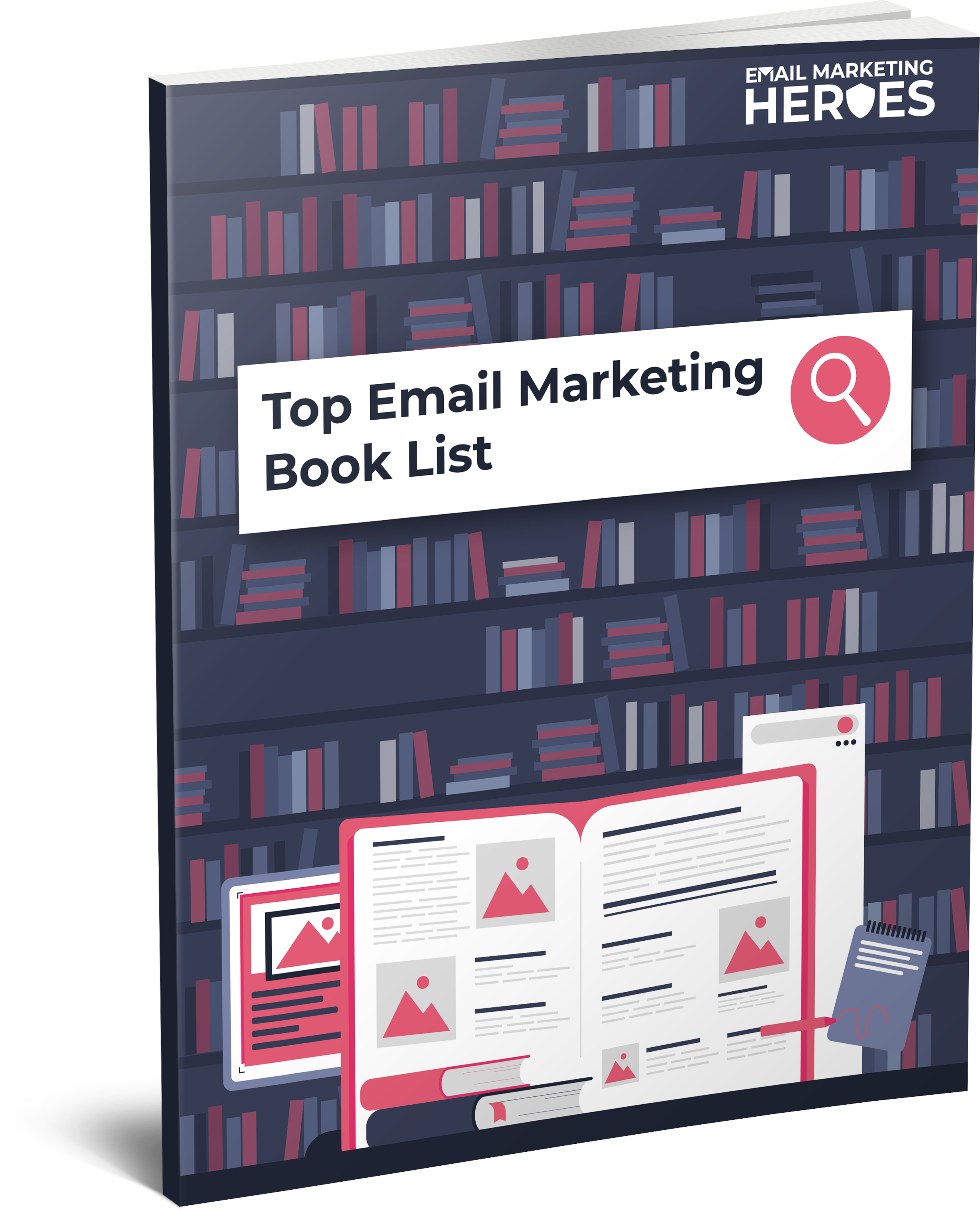
The Top 10 Books To 'Power Up' Your Email Marketing
10 book recommendations that will improve all areas of your email marketing (including some underground treasures that we stumbled upon which have been game-changing for us).
Why you should get rid of those who don't engage
Re-engagement is a fundamental activity in your email marketing. Every time you send an email Gmail and the other service providers check how many people engage. If the percentage of people who don’t engage is high, Gmail and the likes are going to get the idea that your emails aren’t valuable. So they’re going to demote you from the Primary inbox and send you to the Promotions folder. And from there to the Spam folder until you potentially get blacklisted.
And that’s also true if people enter the wrong email address when they register or if they’re no longer using that email address (and you’re getting bounces). There’s also a scenario where you may have spam traps on your list. These are email addresses that were once real but are no longer valid and are used by service providers to identify senders who don't follow email best practices.
In a nutshell, not having an engaged email list damages your reputation as a sender. And the result is that the people who want to receive your emails won't get them. If your reputation is bad or you’ve been blacklisted, when someone tries to sign up for your email list because they want your lead magnet, they won’t get it! Because you haven't proved that you’re a good sender.
This means that your subscribers won't get your marketing. But also, potentially, your customers won't get their login details for your programme!
Don't be afraid of deleting subscribers from your list!
So make sure you have a re-engagement email campaign set up in your business. If people don't engage with you in X amount of days, give them a good chance to click on your links again and let you know they're still around. And if they don't, either stop emailing those people or (better still) remove them from your list.
That might sound a bit scary, but by doing that, you’ll immediately see an increase in your email deliverability. More people receiving your emails means more people open them, click on links, and buy – because they are actually seeing your marketing! You'll have a cleaner list and you'll be able to send love to it regularly. Trust us when we say this is a powerful way to increase your sales and your revenue.
Subject line of the week
This week’s subject line is “Unfair advantage (today’s training)” and it was for an email that was sent in the build-up to a webinar. We were telling people we wanted to share with them an unfair advantage that we have in our business. So check it out!
Useful Episode Resources
Related episodes
How To Increase Your Open Rates (They’re Wrong But…)
What to do if you have a high unsubscribe rate.
6 Things You Didn’t Know Your Email Marketing Platform Could Do.
FREE list to improve your email marketing
If you want to write better emails, come up with better content, and move your readers to click and buy, here's how. We put together this list of our Top 10 most highly recommended books that will improve all areas of your email marketing (including some underground treasures that we happened upon, which have been game-changing for us). Grab your FREE list here.
Join our FREE Facebook group
If you want to chat about how you can maximise the value of your email list and make more money from every subscriber, we can help! We know your business is different, so come and hang out in our FREE Facebook group, the Email Marketing Show Community for Course Creators and Coaches. We share a lot of training and resources, and you can talk about what you're up to.
Try ResponseSuite for $1
This week's episode is sponsored by ResponseSuite.com, the survey quiz and application form tool that we created specifically for small businesses like you to integrate with your marketing systems to segment your subscribers and make more sales. Try it out for 14 days for just $1.
Join The League Membership
Not sick of us yet? Every day we hang out in our amazing community of Email Marketing Heroes. We share all of our training and campaigns and a whole bunch of other stuff. If you're looking to learn how to use psychology-driven marketing to level up your email campaigns, come and check out The League Membership. It's the number one place to hang out and grow your email marketing. Best news yet? You can apply everything we talk about in this show.
Subscribe and review The Email Marketing Show podcast
Thanks so much for tuning into the podcast! If you enjoyed this episode (all about how to create a successful re-engagement email campaign) and love the show, we'd really appreciate you subscribing and leaving us a review of the show on your favourite podcast player.
Not only does it let us know you're out there listening, but your feedback helps us to keep creating the most useful episodes so more awesome people like you can discover the podcast.
And please do tell us! If you don't spend time on email marketing, what do you really fill your working days with? We'd love to know!

